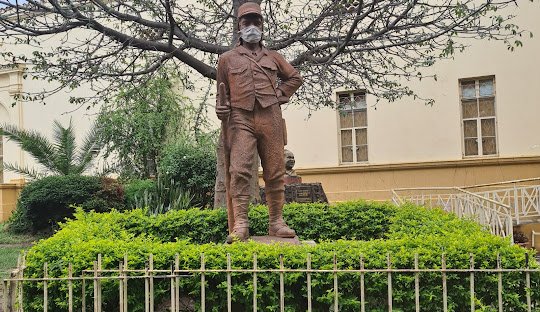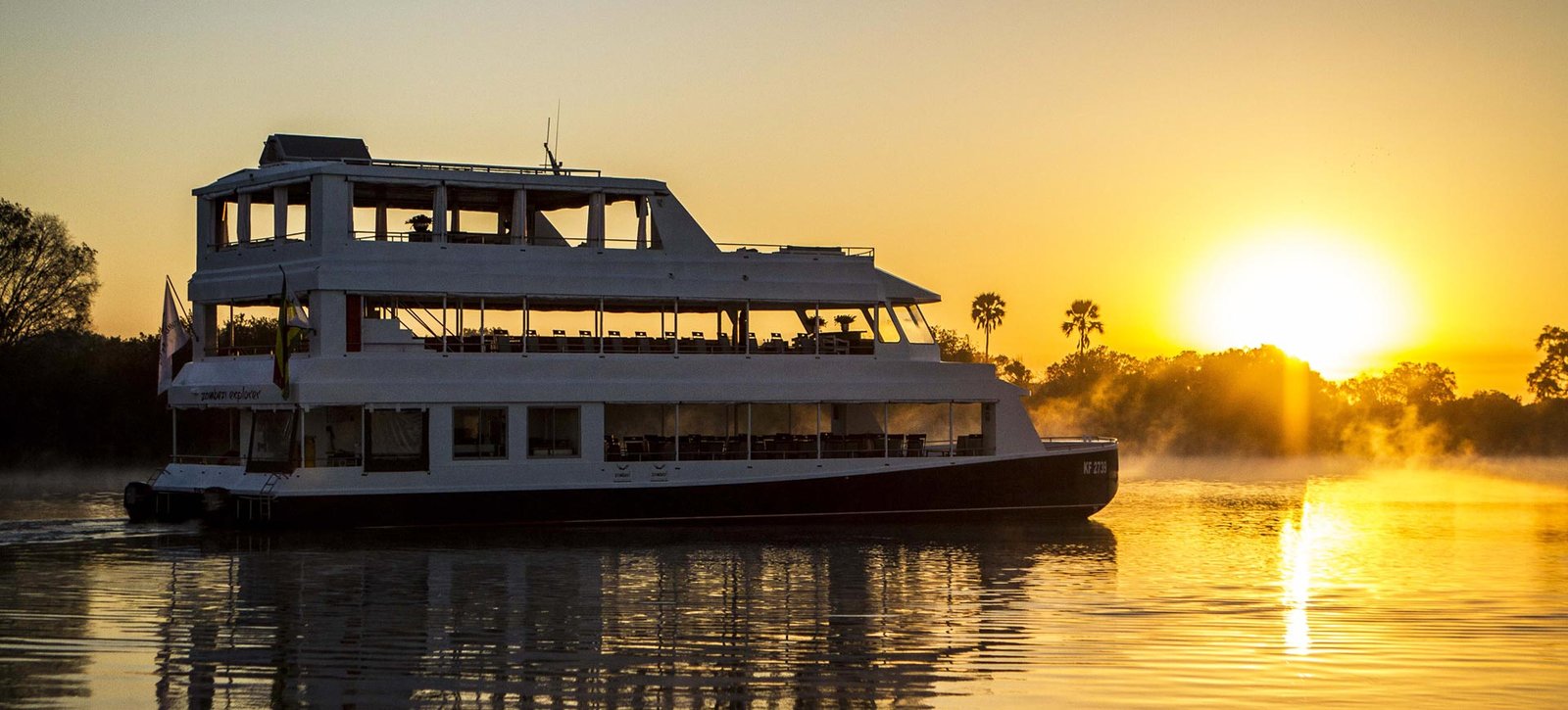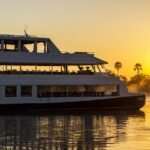Nestled in the heart of Zambia, the Livingstone Museum is an awe-inspiring destination that promises an unforgettable experience for history buffs, cultural enthusiasts, and adventure seekers alike. Established in 1934, this museum is not just the oldest in Zambia but also one of the most comprehensive repositories of the region’s rich heritage. Let’s embark on a virtual tour and explore the myriad wonders that make the Livingstone Museum a must-visit destination.
Journey Through History, Culture, and Adventure
A Brief History about Livingstone Museum
The Livingstone Museum was initially known as the David Livingstone Memorial Museum, named after the famous British explorer and missionary Dr. David Livingstone. The museum was set up to honor his significant contributions to the exploration of Africa and his relentless fight against the slave trade. Over the years, it has expanded its collections and exhibits to cover various aspects of Zambian culture, history, and natural heritage.
Livingstone Museum Fun Facts and Highlights
- Largest and Oldest Museum in Zambia: The Livingstone Museum is not only the largest but also the oldest museum in Zambia, with its origins dating back to the 1930s. Its longevity and size allow it to house an extensive collection of artifacts that span multiple disciplines.
- David Livingstone’s Personal Effects: One of the most intriguing sections of the museum is dedicated to Dr. David Livingstone. Visitors can view his personal letters, navigational tools, and even the original maps he used during his explorations. Among these, the sextant and compass he used are particularly fascinating, providing a tangible link to the era of great explorations.
- Comprehensive Ethnographic Collection: The museum boasts an impressive ethnographic collection that showcases the diverse cultures and traditions of Zambia. From intricate beadwork and traditional musical instruments to ceremonial masks and pottery, this section provides deep insights into the customs and artistic expressions of various Zambian tribes.
- Natural History Exhibit: Nature enthusiasts will find the natural history exhibit particularly captivating. It includes a wide array of specimens from the animal and plant kingdoms. One highlight is the extensive collection of insect specimens, which showcases the biodiversity of Zambia. The exhibit also features a skeleton of a massive hippopotamus and other wildlife displays, offering a glimpse into the rich fauna of the region.
- Archaeological Treasures: The archaeological section of the museum is home to some of the oldest artifacts found in Zambia, dating back to the Stone Age. Among these, visitors can find stone tools, pottery shards, and ancient weapons that provide evidence of early human settlements in the region. The meticulous presentation of these artifacts helps visitors understand the evolution of human activity in Zambia.
- Interactive and Educational Programs: The Livingstone Museum is not just about static displays; it actively engages visitors through interactive and educational programs. Workshops, guided tours, and temporary exhibitions ensure that there is always something new to learn and experience. These programs are particularly popular among school groups and families.
Special Artifacts
- Livingstone’s Journal and Medical Chest: One of the most poignant artifacts in the museum is David Livingstone’s journal, in which he meticulously recorded his observations and experiences. Alongside it is his medical chest, which he used to treat himself and others during his arduous journeys. These items provide a deeply personal glimpse into the life of the renowned explorer.
- Chief Mukuni’s Regalia: The museum features the traditional regalia of Chief Mukuni, a prominent leader of the Leya people. The regalia includes elaborate headdresses, ceremonial robes, and spears, illustrating the significance of leadership and ceremonial practices in Zambian culture.
- Pre-Colonial Trade Beads: The collection of trade beads offers insights into the pre-colonial trade networks that existed in Zambia. These beads, made from various materials such as glass and metal, were used as currency and in adornments, highlighting the region’s historical connections with other parts of Africa and beyond.
- Tonga Drums and Musical Instruments: The museum’s collection of traditional musical instruments, including the distinctive Tonga drums, showcases the rich musical heritage of Zambia. These instruments are not only beautiful to look at but also demonstrate the central role of music and dance in Zambian culture.
- Colonial-Era Artifacts: The museum also houses a significant collection of colonial-era artifacts that shed light on the impact of European colonization on Zambia. These include documents, photographs, and personal items from the colonial period, providing a balanced perspective on the country’s complex history.
A Journey Through Zambia’s Past
Walking through the halls of the Livingstone Museum, visitors embark on a journey through Zambia’s past, from prehistoric times to the present day. The museum is thoughtfully divided into sections that allow for a chronological exploration of the country’s history.
Prehistoric and Archaeological Exhibits: Start your journey in the prehistoric section, where the ancient stone tools and fossils tell the story of early human inhabitants. The archaeological displays take you through the evolution of human societies in Zambia, showcasing how early communities adapted to their environment and developed sophisticated tools and crafts.
Ethnography and Culture: Move on to the ethnographic section, where the vibrant cultural heritage of Zambia comes to life. The displays of traditional attire, household items, and religious artifacts highlight the daily lives and spiritual practices of different ethnic groups. This section also includes reconstructions of traditional village scenes, offering a glimpse into the past ways of life.
Natural History: The natural history exhibits provide a captivating look at Zambia’s rich biodiversity. From the impressive hippopotamus skeleton to the delicate butterfly specimens, this section underscores the importance of conservation and the need to protect Zambia’s natural heritage.
Colonial History and Independence: The colonial history section provides a sobering look at the impact of European colonization on Zambia. Through photographs, documents, and personal stories, visitors gain an understanding of the struggles faced by Zambians during this period. The narrative then transitions to the fight for independence, culminating in the celebration of Zambia’s sovereignty.
Livingstone’s Legacy: Finally, the section dedicated to David Livingstone ties the entire experience together. His explorations, humanitarian efforts, and enduring legacy are presented through a carefully curated collection of artifacts and personal belongings. This section not only honors Livingstone’s contributions but also invites visitors to reflect on the broader implications of exploration and cultural exchange.
An Engaging Experience for All Ages
The Livingstone Museum’s commitment to education and engagement makes it an ideal destination for visitors of all ages. Interactive displays and hands-on activities ensure that children remain engaged and curious throughout their visit. Meanwhile, the detailed exhibits and informative panels provide adults with a deeper understanding of Zambia’s history and culture.
The museum also frequently hosts temporary exhibitions, which highlight different aspects of Zambian life and bring in new artifacts and stories. These exhibitions ensure that there is always something new to discover, even for repeat visitors.
Conclusion
The Livingstone Museum is more than just a collection of artifacts; it is a portal to Zambia’s rich and diverse past. Whether you are fascinated by ancient history, intrigued by traditional cultures, or inspired by the stories of explorers, the museum offers something for everyone. Its extensive collections, interactive exhibits, and educational programs make it a must-visit destination for anyone traveling to Zambia.
A visit to the Livingstone Museum is a journey through time that illuminates the many facets of Zambia’s heritage. It is a place where history comes alive, stories are told, and the past is preserved for future generations. So, when you find yourself in Zambia, make sure to carve out time to explore this remarkable museum. It promises to be an enriching and enlightening experience that you will cherish long after you leave.
South Africa Packages
12 Days Exclusive Safari and Cape Splendor
10 Days Kruger Private Reserves & Cape Town
12 Days Kruger Reserves and Gorilla Trekking Safari
4 Days Tremisana Lodge Kruger Park Safari
3 Days Kruger and Swaziland Cultural Tour
3 Days Kruger National Park Camping Safari
10 Days Kruger Private Reserves & Cape Town
Namibia Packages
9 Days Luxury Namibia and Gorilla Trekking Safari
6 Days Etosha, Swakopmund & Sossusvlei (Camping)
3 Days Etosha Guided Camping Safari
Zimbabwe Packages
5 Days Victoria Falls and Hwange National Park Safari
4 Day Victoria Falls Fly-in Safari
3 Days Victoria Falls Experience Staying at Phezulu Lodge
3 Days Kariba Sailing Safari (Self-Drive Add-on)
1 Day Victoria Falls, Game Drive with Bush Dinner
9 Days Hwange and Victoria Falls Safari
8 Days Chobe and Victoria Falls Tour
7 Days Victoria Falls, Hwange NP and Matobo NP Experience
Uganda Packages with Gorilla Trekking Experience







Leave a Reply